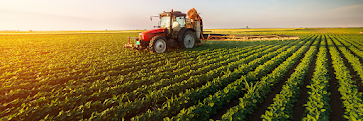What’s Up with Agricultural Technology?
For instance, a farmer may be interested in
sustainably growing more food using less space while minimizing environmental
impact. They could try vertical farming, which involves growing produce indoors
on vertically stacked shelves.
Vertical growers control critical environmental
factors like light, humidity, and water to achieve year-long harvests, all
while using 70-95% less water than traditional methods. Many people can find
vertically grown leafy greens or herbs in their grocery stores today.
On the other hand, maybe food safety or origin is of interest. Some companies are using block chain to track where and when food products change hands before reaching your lunchbox. We’ll cover how block chain works in a later article, but for now, note that this traceability helps companies pinpoint foodborne illness outbreaks and helps consumers determine whether that “wild-caught salmon” was actually caught in the wild.
While technology has consistently improved farming practices since the advent of early irrigation systems, plows, and other tools, today’s technologies deserve special attention. They help us achieve important societal, diplomatic, and humanitarian goals. That’s why the United States partakes in innovation summits , partnerships, and other projects to advance agricultural technologies domestically and internationally. Plus, check out Feed the Future, a U.S. Government program promoting global food security and helping develop agricultural systems around the world.



Comments
Post a Comment